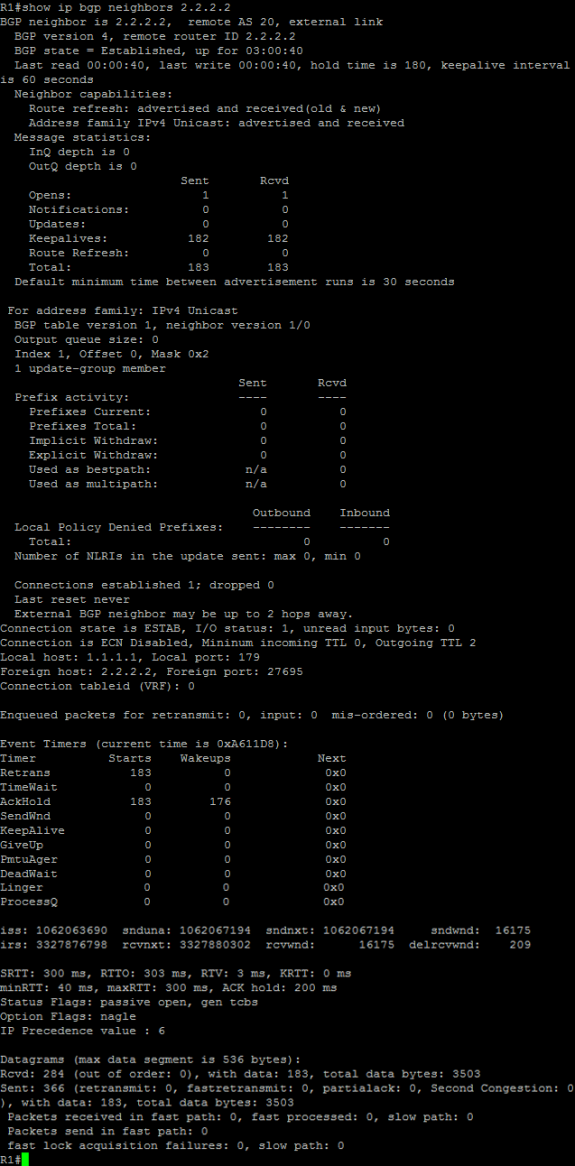In this lab, I use two Cisco 3725 routers [IOS 12.4(15)T10] to configure eBGP peers using loopback interfaces. Below is the network diagram for this lab.
You’ll notice below that instead of using the local physical interface’s IP address on R1 and R2 to create a TCP socket for BGP to communicate, I instead configure and use loopback interfaces for the TCP connection endpoints.
If the physical interfaces on R1 and R2 were used for the TCP connection, if either interface failed, the TCP socket for BGP communication would fail. However, if loopback interfaces are used and as long as some other route exists for the routers to reach each other’s loopback addresses, even if one of the physical interfaces were to fail, the TCP connection and therefore the BGP session would not fail. In this example I have not configured any other routes; obviously, in a real life situation you definitely would.
R1
enable
conf
interface lo 1
ip address 1.1.1.1 255.255.255.255
exit
interface fa 0/0
ip address 10.0.0.1 255.255.255.252
no shut
exit
router bgp 10
neighbor 2.2.2.2 remote-as 20
neighbor 2.2.2.2 ebgp-multihop 2
neighbor 2.2.2.2 update-source lo 1
exit
ip route 2.2.2.2 255.255.255.255 fa 0/0
exit
wr
R2
enable
conf
interface lo 2
ip address 2.2.2.2 255.255.255.255
exit
interface fa0/0
ip address 10.0.0.2 255.255.255.252
no shut
exit
router bgp 10
neighbor 1.1.1.1 remote-as 10
neighbor 1.1.1.1 ebgp-multihop 2
neighbor 1.1.1.1 update-source lo 2
exit
ip route 1.1.1.1 255.255.255.255 fa 0/0
exit
wr
Verifications:







 Twitter
Twitter LinkedIn
LinkedIn Youtube
Youtube RSS
RSS
1 Response to Configuring eBGP Peers to Use a Loopback Interface